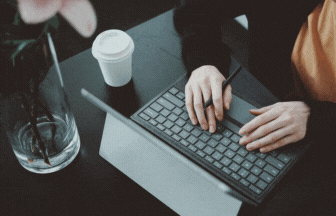Today, with the development of Internet infrastructure, combined with the widespread use of smartphones, we live in a world where people can easily purchase products from other countries, even if they live abroad.
In recent years, more and more companies are also using the “cross-border EC” system to improve company sales.
In this issue, we will provide an overview of such cross-border EC and introduce cross-border EC in detail, including an explanation of the taxation system related to imports and exports.
目次
Advantages and disadvantages of cross-border EC

This section provides an overview of cross-border EC, divided into advantages and disadvantages.
Advantages
First, we will discuss the advantages of using cross-border EC, focusing on the following items.
- Gain access to overseas customers.
- Increase in the number of products sold to foreign countries
- Low-cost operation
Let us look at them one by one.
Gain access to overseas customers.
By using cross-border EC, you can market your products not only in Japan but also outside of Japan.
With the recent popularity of smartphones and other electronic devices, it has become relatively easy to enter foreign sites.
Against this backdrop, selling products through cross-border e-commerce will certainly increase the opportunities for people overseas to take notice of Japanese products, and therefore, sales can be expected to increase.
In particular, many overseas people are interested in subcultures such as Japanese manga and anime, and if you can target such people and promote your products to them, it will lead to further sales development for your company.
Increase in the number of products sold to foreign countries
There are several products that cannot be handled in overseas trade that can be traded if they are sent by mail through cross-border EC.
However, it is important to note that the goods that can be traded vary from country to country.
It is important to check country-specific rules from time to time, as future revisions of laws may occur.
For both overseas consumers and Japanese living abroad, it is a very attractive point that products that are not available through overseas trade can be delivered to them as desired through cross-border EC purchases.
Low-cost operation
Trying to build a store in a foreign country that is only available in Japan would be extremely costly and time-consuming. Building a physical store overseas also requires consideration of warehousing for product inventory, and entails a fairly large risk.
In addition, there is the cost of purchasing land and tenants, expanding the interior, repairing the building, making sure not to neglect purchasing, securing personnel who speak the local language, maintaining business, and many other costs involved in running a physical store.
Unless you are a very well-known major company, for example, it is tough to run an operation that meets all of the above criteria.
However, with cross-border e-commerce, you can market your products outside of Japan without the need to build a physical store abroad.
Although minor expenses such as commissions exist, selling products through cross-border EC can be a more realistic business development than having a physical store.
demerit
This section will focus on the following items to explain the disadvantages that arise when using cross-border EC.
- Translation into a variety of languages is essential
- A vast amount of knowledge is required.
- Need to support various payment methods
Let’s look at them one by one, starting with the following.
Translation into a variety of languages is essential
Isn’t “language” a major hurdle to starting cross-border EC?Cross-border e-commerce allows you to sell products to any country, so you need to use the local language to conduct your business.
Not only for the top page, but also for product pages and customer support, it is essential to have translations adapted to the country.
A website created in an uncomfortable language generated by automatic translation is sufficient material to lower a company’s credibility.Therefore, accurate translation work is essential.
While relying on several translation agents and others who can speak the local language can solve this problem, it is important to note that this will reduce the labor cost for this purpose.
A vast amount of knowledge is required.
The vast amount of knowledge includes “logistics”, “customs”, and “shipping”.
One of the strengths of Japanese commerce is that it offers excellent customer service and prompt trouble-shooting, and consumers feel a great sense of security due to the high level of trust in the company.
It is necessary to check in advance how to make the delivery of goods smoother, how to figure out the number of items that will not be caught by customs, and how to minimize shipping costs.
Also, please note that some products are restricted for import in certain countries.
In order to avoid doing business with foreign countries with ambiguous knowledge and causing irreparable problems, it is necessary to input all necessary information and to be flexible enough to respond to changes in the law.
Need to support various payment methods
When using cross-border EC to sell products, if you want to target mainly developed countries, there is not much of a problem because credit-based payment methods are available.
However, since only a limited number of countries accept credit cards for payment, it is naturally necessary to prepare payment methods other than credit cards if you aim to further increase sales.It is a good idea to accumulate knowledge not only of cash, but also of electronic money, which is frequently used in different countries.
Logistics in Cross-border EC

In this section, we will introduce the logistics model for cross-border EC, followed by an overview of the taxation system for imports and exports.
Two core logistics models
In general, when focusing on the situation of selling products from Japan to Chinese customers through cross-border EC, there are two major logistics models.
One is the “direct shipping model” and the other is the “bonded area model.
The “direct delivery model” refers to the method of direct delivery from Japan using an international courier service when a Chinese customer purchases a product listed on a cross-border EC site.
The “bonded area model” refers to a method in which goods are shipped to a bonded area in China in advance, where the goods are stored and managed, and when an order is placed, the goods are shipped from that bonded area after customs clearance.
Differences in taxation between general trade and taxation on imports and exports in cross-border EC
This section explains the taxation requirements for importing and exporting goods to and from China.
First, the taxes required for exporting goods to China are divided into the following four categories
- tariff (import tax)
- value-added tax
- consumption tax (incl. sales tax, VAT, excise duty, etc.)
- postage stamp tax
Let me briefly explain each of them one by one.
tariff (import tax)
Customs duties are taxes imposed by the Chinese government on goods entering China.
value-added tax
Value-added tax is a tax imposed on goods at the distribution stage, similar to the consumption tax in Japan.
The basic tax rate is 17 %となっていますが、生活インフラとなる穀物や食用油、天然ガスなどの一部特別な商品に対しては、低減税率13%.
consumption tax (incl. sales tax, VAT, excise duty, etc.)
A consumption tax is a tax imposed on luxury goods and some other specified luxury goods. The tax is imposed at the time of shipment from the factory or at the time of importation.
It is similar to the liquor tax in Japan, which is levied at a rate of approximately 3-45%, depending on the product.
postage stamp tax
The tax is levied on goods imported by individuals, and the tax rate varies depending on the category of goods. If the total amount of the tax is less than 50 yuan (Chinese currency), tax exemption is applied.
When using cross-border EC, a tax called the “cross-border EC tax” is imposed, which is separate from general trade.In addition to the customs duty, value-added tax, and consumption tax, three other taxes must be paid when goods are exported from Japan to China as part of general trade.
In the case of the direct shipment model, there are also two tax systems, one called the line postal customs clearance system and the other called the three-unit tax system, in which the same tax rates apply as in the bonded area model.
From April 9, 2019 onward, the rates of the Gyotax will be divided by product: 50 %、20% 13%. And, as mentioned above, if the total amount of the postage tax is less than RMB 50 (Chinese currency), tax exemption will be applied.
The tax rate is 13% for goods such as books, newspapers, computers, and food %、スポーツ用品や自転車などには20% 50% for cigarettes, alcohol, and golf equipment.In addition, the direct shipment model in the case of a three-unit combination is subject to the same tax rate as the bonded area model.
The term “three-in-one” refers to a customs clearance system in which three pieces of data are linked together: information about the order, then information about the payment, and then information about the transportation. The system will be applied only to goods that are on the positive list issued by the Chinese government.
The tax rate imposed on beverages, food, and daily necessities is 11. %で、貴金属に対しては20.2% a rate of %で、貴金属に対しては20.2%.
summary
In this issue, we provided an overview of cross-border EC and introduced cross-border EC in detail, including an explanation of the taxation system related to imports and exports. Recently, cross-border EC is being used more frequently in Japan, and an increasing number of companies are effectively using cross-border EC for their own business development.
Japanese products are highly trusted and of good quality, and are therefore highly valued by overseas customers. If such Japanese products can be properly promoted online, further development of cross-border EC can be expected in the future.



















